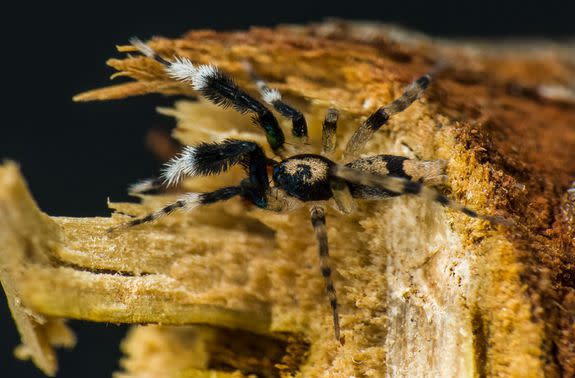Scientists find 50 exciting new spider species, and arachnophobes will be thrilled

The world is full of surprises, and as it turns out, most of them are spiders.
Scientists discovered 50 new spider species during a research trip to Australia's Cape York Peninsula, including a new species of peacock spider, which dances as part of an elaborate courting ritual, and an ant-eating spider, which imitates its prey.
SEE ALSO: This startup wants to build a nano satellite fleet for the internet of things
Robert Raven, a spider expert at the Queensland Museum, said the team did not expect the abundance of life they found in far-north Queensland. One night they put up a white sheet, shone a light and it was simply "pounded" by insects, he recalled. "It was amazing stuff."
The two-week trip was part of Bush Blitz, a program aimed at species discovery.

Image: R. Whyte
In Raven's view, the abundance of insect life in the area is due to the unique terrain of Quinkan Country. "There are amazing cliffs, gullies and rainforest through the otherwise open woodland," he explained. "It's a very heterogeneous kind of landscape, and it was just more rugged than the areas we'd been before."
The team collected insects using traps and nets, and, unusually, by letting a diesel car engine idle. Bugs are attracted to the engine, though Raven is not 100 percent sure why.
"It was so vibrant out there," museum scientist Barbara Baehr added. "It was just alive."
Baehr, who has described 600 species in her lifetime, said we may still be aware of less than half of Australia's spider species.
"We know about 3,500 [spider] species in Australia, but that's just what's described," she estimated. "There's between 9,000 and 15,000 out there."

Image: R. Whyte
Raven, for his part, was most struck by a diving tarantula.
"I'd never seen a big spider jump straight into water like that. It didn't try and swim across the surface or anything, it just went straight down and under," he said. "It can survive under the water for a few hours."
The trip was undertaken with the assistance of Aboriginal Yalanji rangers in Quinkan Country.
"Working with Bush Blitz allows us to become more aware of the issue that need our attention," Western Yalanji Aboriginal Corporation manager Brad Grogan said in a statement. "Hopefully this expedition will help us identify areas of natural values that we can protect for the future."
The local community is trying to have the region heritage listed — a move Baehr hopes their research will support.
"It's so pristine and it's one of the last areas we have here in Australia," she said.
